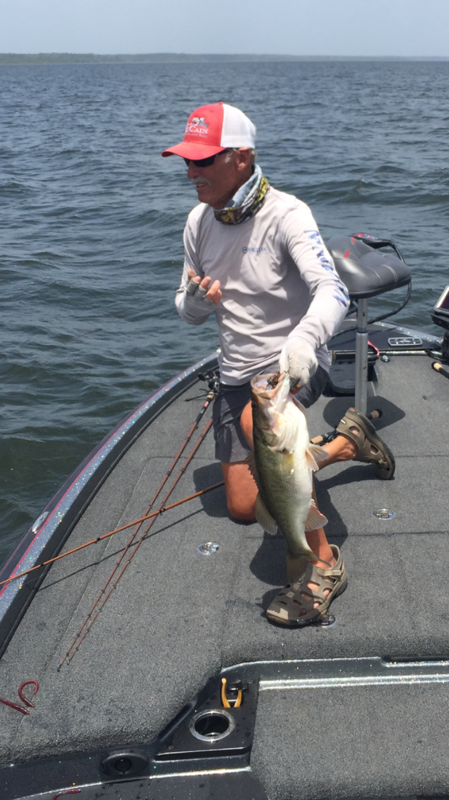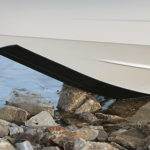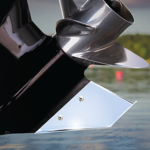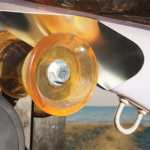How to Choose the Right Fishing Rod
Anglers across the country spend millions of dollars on baits to catch their favorite fish. They also spend millions annually on equipment that protects their investment, like a Megaware KeelGuard, for their boats. However, many get surprisingly stingy when it comes to the piece of equipment that controls the presentation that coax fish into biting – the fishing rod. One of the reasons may simply be because they don’t know how to choose the right fishing rod.
A novice angler can quickly become confused with the vernacular. These words confuse a novice angler: Light, Medium Light, Medium, Medium Heavy, Heavy, and Extra Heavy. But these words are vital, as they explain the action, aka, the strength and flexibility of a rod. A Light action rod is the most flexible, but also the weakest. The Extra Heavy action rod is the strongest, but also has the least flexibility. So how do you know which rod to choose?

How to Choose the Right Fishing Rod
Components that make up rods are equally confusing, but as a rule, graphite rods are light in comparison to rods made with a glass component. However, while a glass rod might be heavier, it has much greater sensitivity and flexibility. You can see how quickly this can confuse a novice angler. Luckily, pro angler Tommy Martin explains a common sense approach to rod selection. And who better to explain? Throughout his career, Martin has appeared in 19 Bassmaster Classics, where he claimed the crown in 1974. He has been a fishing guide for over 50 years, and, at the tender age of 78, still competes regularly on BASS & FLW Open tournaments.
“The standard size for rods in the 70’s was just 5 ½ feet long!” Martin recalls. “Today, the trend for rods is getting longer and longer.” He adds, “Furthermore, back then there were only a half dozen techniques anglers used. Today, there are dozens of ways to catch fish.”
Thus, we see the development of dozens of rods with different actions.
Berkley, G Loomis, and Bass Pro Shops have all called on the champion to help develop rods throughout his career. He then used his these experiences and over 50 years of guiding and competing to launch his own set of rods with McCain Fishing, the Tommy Martin Signature Series. The aforementioned trend is backed up. Right now their best selling rods are 7 – 7 ½ feet long.
If Martin had to choose just one rod, what would it be? He claims there is just no way to do that. He compares it to golf, “A golfer would not use a putter to tee off. Nor would he used a wedge to putt. Rods are made today for specific techniques and situations.” Before purchasing a new rod, he recommends weighing three factors.

3 Things to Ask to Know How to Choose the Right Fishing Rod
1. Which technique will you be primarily using the fishing rod for?
2. What is the prevalent size of fish in the fishery? As a general rule of thumb, the smaller the fish, the lighter action needed, while larger fish require heavier action rods.
3. What is the size of the line paired with the weight of the bait the rod? Heavy baits require heavier fishing line, thus requiring heavier action rods.
When to choose a spinning rod
For finesse presentations such as drop shot rigs, shaky heads, and lightweight crankbaits, Martin suggests a spinning rod. A spinning rod is necessary to make longer casts with these lightweights.
Spinning rods are also a top choice when fishing clear and pressured water, “These situations require lighter line to trick fickle fish into biting. Fishing line less than 10-pound test needs a spinning rod,” Martin insists.
When to choose a baitcast rod
For almost all other applications, he prefers a baitcast rod. “While guiding I frequently see my clients with the wrong action rod for the style of fishing, and it is not my style to tell someone they have the wrong setup. But if an angler wants to maximize their fishing catching success, they have to have multiple rods ready for different presentations.”

What about treble hooks?
When dealing with baits that have treble hooks, he recommends a rod with a lot of forgiveness. “You will lose so many fish with a stiff rod [when using treble hooks], because setting the hook will pull the bait out of the fish’s mouth.” He claims a 100% graphite rod is too stiff in these situations, yet his McCain Rods are made with graphite. “Not so fast! The forgiveness comes from the tip of the rod. The final 15-18 inches of my rods are actually made from S-glass material giving all of the forgiveness necessary to stick the fish properly.” This graphite gives great strength and keeps the rod light, while the S-glass, allows the fish to get the entire bait in their mouth.
“Presentation is the key to tricking a fish into biting,” insists Martin. “The rod is the tool used to create that presentation, but it must be matched up accordingly with the other tools being used; specifically, the line and bait.”
So, now that you know how to choose the right fishing rod, what are you waiting for? Get out on the water. And if you need to protect your boat first, be sure to check out the entire line of Megaware products. You can purchase them online or in most major retailers nationwide.







Comments